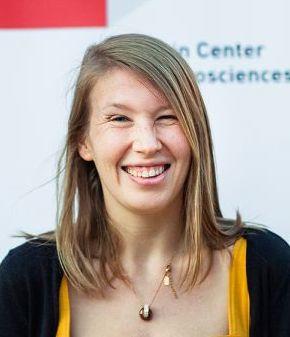Greta Häberle
I studied Cognitive Science at the University of Osnabrück with a focus on Cognitive Neuroscience / Cognitive Neuropsychology and wrote my Bachelor’s and Master’s thesis in the Neurobiopsychology lab led by Prof. Peter König. Afterwards, I moved to Berlin and did three labrotations in the labs of Martin Rolfs, Elisa Filevich and this lab as part of my graduate program before joining the lab in May 2019 as a PhD candidate. I am planning on handing in my thesis in October 2022.
In my free time I am into weight lifting, environmental sustainability and reading lots of books while hanging out with my cats.
General research interests
I am generally interested in scene processing in the human visual cortex and the robustness of our research methods. In one of my current projects I am investigating this by looking at the effects of eye movements on EEG data analysis (i.e. MVPA). I am trying to make my research open and reproducible by adopting open science practices and have been involved in the creation of a preregistration template for EEG studies. I additionally did some work using Deep Neural Networks.
I am part of the Einstein Center for Neurosciences and the Berlin School of Mind and Brain. The first three years of my PhD have been funded by the Einstein Center for Neurosciences and I am currently supported by a scholarship provided by Radek’s ERC grant. During my labrotation I was co-supervised by Prof. Daniel Kaiser and part of two projects investigating scene processing in healthy adult human participants using fMRI and EEG.
Research projects:
I study the effect of eye movements on decoding accuracies in EEG. In this project I are in interested in how fixation behaviour effects the ability to decode from EEG data. Previous research has shown that systematic eye movements can induce effects in M/EEG data. Most neuroimaging studies therefore control eye movements in one way or the other. This can be achieved by instructing participants to fixate on a fixation cross and to blink only during so called catch trials, by excluding eye movements via algorithms (i.e. ICA) after the experiment or by a combination of these approaches. However, these approaches still pose several problems. Especially new participants are not able to control their eye movements properly. If these eye movements are then removed non-linear effects might still be present in the data. It is however unclear, whether this poses a practical problem for low level visual experiments where participants are instructed to fixate. It has been shown that the amount of microsaccades and saccades displayed by participants can be reduced by using a specific fixation target. We made use of this fact to test to which extent our methods are dependent on the ability of our participants to fixate properly. I plan on finishing this project until August 2022.
Student supervision & opportunities
I have previously supervised the internship and master’s thesis of Pelin Çelikkol (University of Potsdam). I am not looking for interns as I am planning on graduating soon.
2021 Kaiser D., Häberle G., Cichy R.M., Coherent natural scene structure facilitates the extraction of task-relevant object information in visual cortex., Neuroimage
2020 Kaiser D., Häberle G., Cichy R.M., Real-world structure facilitates the rapid nemergence of scene category information in visual brain signals.,J. Neurophysiol
2019 Kaiser D., Häberle G., Cichy R.M., Cortical Sensitivity to natural scene structure.,Hum Brain Mapp
